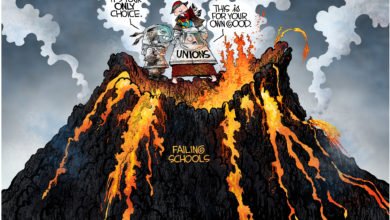The U.S. Economic News You May Not Have Seen
Much of the last few weeks has concentrated on the difficulties that the over-entitled European economies are now facing. News reports, like this one at TheHill.com have been careful to also point to Tim Geithner’s comments that, “The U.S. will not be harmed economically by the debt crisis in Europe”. Mr. Geithner also repeated the Administration mantra that our economy, “is getting stronger. We’re seeing a lot of strength, improvement and confidence.” But how true is that?
Bloomberg.com and Yahoo.com reported that consumers are returning to Galt-like spending habits. The Bloomberg article demonstrates the change in American fiscal discipline by examining the change in the ratio of income to spending:
Incomes rose 0.4 percent in April for a second month, matching the survey median. Wages and salaries rose 0.4 percent last month after climbing 0.3 percent in March.
The savings rate climbed to 3.6 percent last month, the highest level since January, from 3.1 percent in March as incomes increased and purchases cooled.
That means while incomes increased by .4%, none of it went back into the economy – in fact, an extra .1% came out and went into savings. The Yahoo post just puts it plainly by saying, “Consumers don’t appear confident enough in the economy to open their wallets more freely.” This is particularly troubling in a fractional reserve system such as that in the U.S. If no one is borrowing or buying, no additional liquidity can be created. Proof that these are tied lies in the fact that the M3 money supply, the broadest metric of the amount of money in the economy, is at it’s lowest since the great depression.
It’s not just consumer confidence that’s heading south. The head of one of Scotland’s biggest fund companies puts the risk of a global bear market at 40%, up from 30% last month. Markets also demonstrated their lack of confidence as American stocks, Oil, the Euro and the Dow had the worst may since 1940.
There has been trillions in stimulus spending in many forms. Bail-outs have been given to anyone the government thought needed it. Every manner of federal intervention in the economy has occurred – so why is this bad news showing up? “It’s the economy stupid.”
Corporations sold the smallest amount of bonds in ten years in May due to increasing yields (the interest rate on the bonds). Investors are seeking safety in government bonds which is making credit harder for companies to secure. This is the credit crunch that Mr. Geithner has been throwing printed money at for more than a year. It’s still here, is stifling investment and risk-taking – both of which are necessary for job growth (really, it’s not the government that does it).
Politico.com’s Michael Steele sums the problem up for us in this article:
Americans deserve leaders who understand what makes the economy tick. America has always been the place of big dreams and bold moves, where the risk-taking at the root of entrepreneurial growth stands the best possible chance.
That requires an environment where the stock and commodities markets are stable; where the financial sector is strong, allowing for the free flow of affordable credit; where taxes are low and structured to encourage profit and investment, and where regulation is predictable, minimally intrusive and easy to understand.
In other words, the conditions required to grow jobs are exactly the opposite of what entrepreneurs face today under Obama’s radical, anti-growth agenda.
The government cannot impose its will on a free-market economy. Doing so simply pushes a large bubble into another part of the economy where it is fed by printed money, built even higher so that it can assert it’s now even more negative burst on a larger segment of the economy. Let the bubble burst, let the crashes happen, let the bad banks and companies fail. It will hurt, but it will establish equilibrium in the economy for another cycle. Without letting it happen, we are simply building the mess up to a point that will not just be painful, but may be highly destructive.





